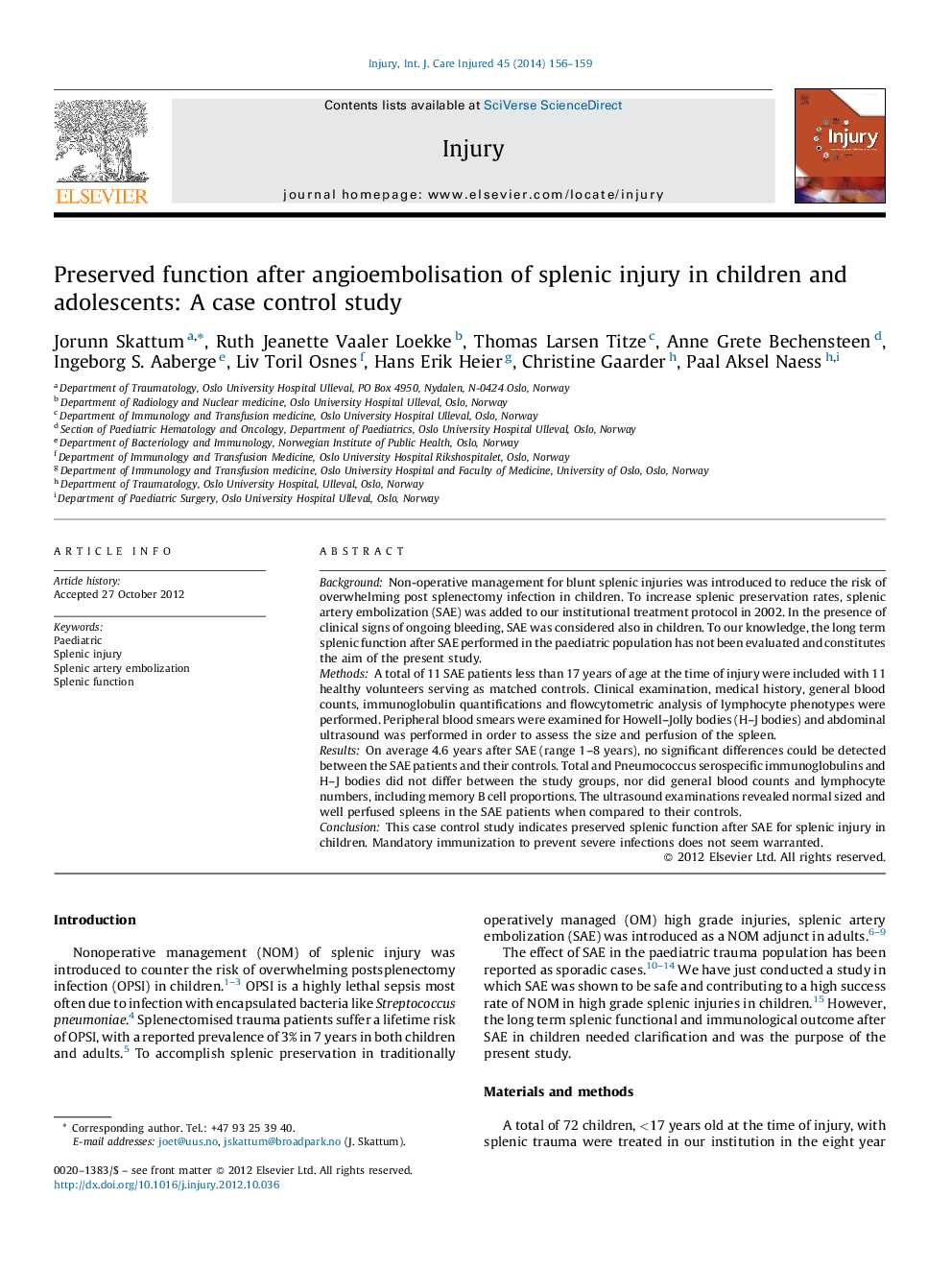| Article ID | Journal | Published Year | Pages | File Type |
|---|---|---|---|---|
| 3239814 | Injury | 2014 | 4 Pages |
BackgroundNon-operative management for blunt splenic injuries was introduced to reduce the risk of overwhelming post splenectomy infection in children. To increase splenic preservation rates, splenic artery embolization (SAE) was added to our institutional treatment protocol in 2002. In the presence of clinical signs of ongoing bleeding, SAE was considered also in children. To our knowledge, the long term splenic function after SAE performed in the paediatric population has not been evaluated and constitutes the aim of the present study.MethodsA total of 11 SAE patients less than 17 years of age at the time of injury were included with 11 healthy volunteers serving as matched controls. Clinical examination, medical history, general blood counts, immunoglobulin quantifications and flowcytometric analysis of lymphocyte phenotypes were performed. Peripheral blood smears were examined for Howell–Jolly bodies (H–J bodies) and abdominal ultrasound was performed in order to assess the size and perfusion of the spleen.ResultsOn average 4.6 years after SAE (range 1–8 years), no significant differences could be detected between the SAE patients and their controls. Total and Pneumococcus serospecific immunoglobulins and H–J bodies did not differ between the study groups, nor did general blood counts and lymphocyte numbers, including memory B cell proportions. The ultrasound examinations revealed normal sized and well perfused spleens in the SAE patients when compared to their controls.ConclusionThis case control study indicates preserved splenic function after SAE for splenic injury in children. Mandatory immunization to prevent severe infections does not seem warranted.
